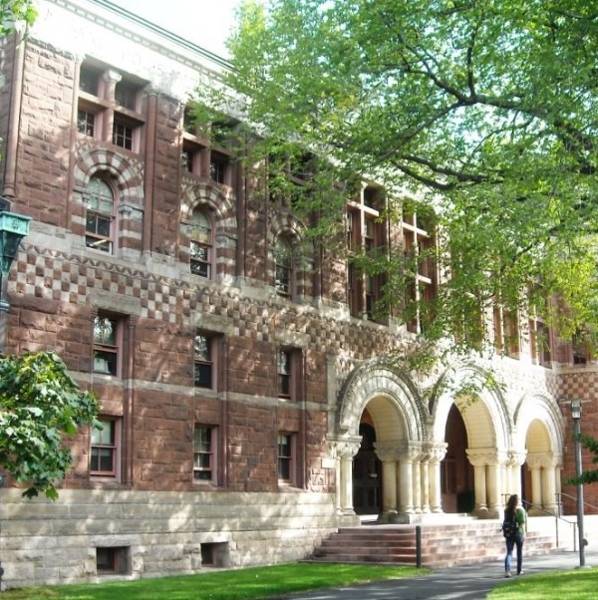The consensus at a recent meeting in Belfast of British and Irish parliamentarians was that devolution will be restored in the next few months. The IRA is said to have almost gone out of business. Leading Sinn Fein members are already advising people to go to the police and will probably endorse the new police service. Ian Paisley is on a charm offensive and recently met the Catholic hierarchy, just as Gerry Adams met Protestant leaders. The optics and mood music all seem good.
And the worst of the conflict is certainly over. At its height in the early 70s, 500 people died in a single year. Very few people were unaffected by the deaths, injuries, intimidation, bigotry and economic dislocation of the Troubles.
Having been a frequent visitor to Belfast for nearly 20 years, I can testify to its transformation into a buzzing centre of swish bars, restaurants, shops and soaring property prices.
However, Northern Ireland is probably more divided than ever. In Belfast, the number of those living in single identity housing areas of about 90% of one faith or the other has actually increased from 63 to 66 per cent since the ceasefires. There are more ugly peace walls than during the Troubles.
It is possible, as former Secretary of State Paul Murphy remarked, for a person to go through their entire life without meeting someone from the ‘other’ community.
Education is as affected by this segregation as any other area of life.
In an ideal world the state would provide a secular education and parents who wanted more would pay for it. This sentiment is fairly widespread on the political left.
It is surprising, though, to hear the same sentiment expressed by Nigel Dodds, a senior MP in Ian Paisley’s staunchly Protestant Democratic Unionist Party.
While members of other political parties offer differing degrees of support to integrated education in Northern Ireland, integrated schools are popular. An authoritative 2006 survey reported that 82 per cent of Northern Ireland’s people believed that integrated education was “important to peace and reconciliation”. Integrated education is also a major factor in people deciding whom to vote for.
All this is good news for the integrated education movement, which began its pioneering work just 25 years ago with 28 pupils in an old scout hut. The sector has blossomed and now has over 18,000 pupils in over 60 schools. But before we get carried away, we should remember this sector represents just over 5 per cent of pupils and parental demand is not matched by supply.
The integrated movement offers a ‘Christian ethos’ in line with Northern Ireland’s more religious traditions but has done sterling work in bringing together Protestants, Catholics and others in one school where their cultural, historical and social differences are explored, unlike schools which are relatively mixed but which tend to sweep differences under the carpet.
A recent academic report found that those who had attended an informally or formally integrated school were more likely to reject traditional identities and allegiances, and the emnities that go with them, than those who had attended a segregated school.
The report supported studies which show that integrated schools can and do positively impact on the outlooks of their pupils and that these positive effects extend into later life, with the potential substantially to soften sectarian attitudes and help create a new common ground in Northern Ireland politics. And parents and grandparents of pupils meet others at the school gate and at school events.
Pupils at integrated schools have much more opportunity to understand each other and tackle potentially divisive issues. Writing in the Guardian, Roy Hattersley observed this of the first integrated school: “Lagan has two chaplains – a Catholic priest and a Protestant minister. When the Pope died, the whole school watched his funeral on television. The college hosted the national schools’ Gaelic football championships. Asked if Protestant boys played Gaelic games, the staff responded with incredulity. The old rules about the absolute separation of Gaelic games from the sports of the English ascendancy have been relaxed.”
There are, however, more than moral arguments in favour of increasing the number of integrated schools as well as greater sharing of facilities between schools. Hard economics is also a part of the picture. The estimated cost of duplicated public facilities is £1 billion a year. In addition to four education sectors (largely Protestant state schools, overwhelmingly Catholic schools, integrated and Irish language schools) there are separate housing estates as well as separate bus routes, post-boxes and post rounds and even separate healthy living centres.
Thanks to falling population rolls there are currently 50,000 empty school desks, which is set to increase to 80,000 spare places. Hundreds of pupils are rattling around in schools designed for thousands. Such a waste of resources is not sustainable and saps the Northern Ireland economy. This is why the Government has embarked on a radical review of education that will see its landscape transformed in the coming years.
Now that the Troubles are over, policy-makers have to work out ways to foster reconciliation. What some call the “Berlin Wall of segregation” or “benign apartheid” in Northern Ireland should be a key target.
Educating children together is an elementary building block of a shared future, even if it’s not a panacea. The debate on faith schools in Great Britain could also benefit from a full understanding of Northern Ireland’s segregation in schools. ■
Gary Kent is the parliamentary consultant for the integrated education movement but writes in a personal capacity. For more information please visit www.nicie.org or www.ief.org.uk

